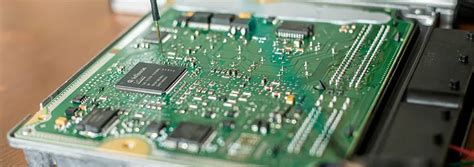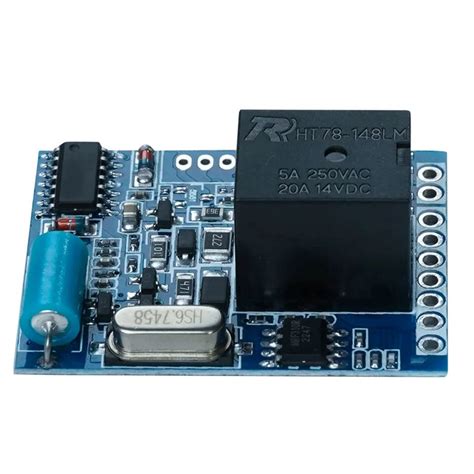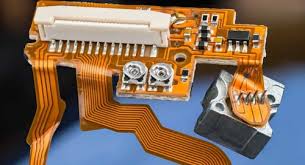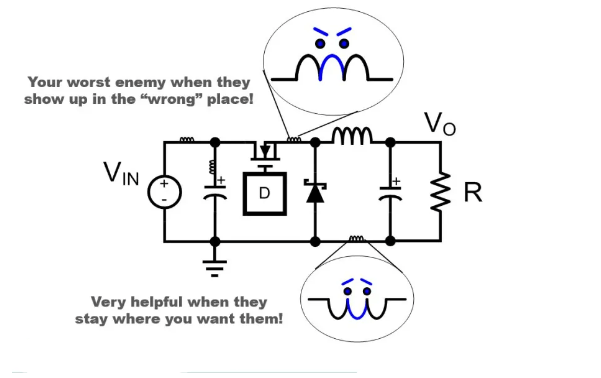Unlocking Efficiency: The Future of Contract Electronic Assembly
Key Takeaways
Contract electronic assembly is fundamentally changing the landscape of manufacturing, offering significant advantages for companies seeking to enhance their operational efficiency. By outsourcing pcb assembly processes, businesses can take advantage of PCBA (printed circuit board assembly) services that not only streamline production but also reduce costs. This collaboration allows firms to focus on their core competencies while leveraging the specialized expertise of contract manufacturers. As this sector continues to evolve, it is essential to recognize the importance of innovative technologies, such as automation and advanced robotics, which are driving efficiency in electronic assembly. Moreover, emerging trends like the adoption of flexible manufacturing practices and sustainable production techniques are reshaping the industry’s future. Ultimately, successful partnership models that emphasize clear communication and trust will be crucial in navigating the challenges posed by rapid market changes. As we move forward into this new era of contract electronic assembly, it is vital for organizations to stay informed about key developments and adapt accordingly to fully harness the potential benefits offered by these cutting-edge solutions.
Introduction to Contract Electronic Assembly: A Game Changer in Manufacturing
Contract electronic assembly has emerged as a pivotal force in modern manufacturing, transforming traditional processes by leveraging specialized expertise and advanced technologies. This approach allows companies to outsource PCB assembly and PCBA needs to experts who possess the necessary skills and equipment, thereby enhancing overall operational efficiency. By doing so, businesses can focus on their core competencies while benefiting from the industry’s latest innovations. The collaboration between manufacturers and contract assembly partners fosters a synergistic environment that encourages creativity and efficiency, ultimately leading to higher quality products that meet market demands.
“Leveraging specialized resources in contract electronic assembly not only streamlines production but also enhances product innovation.”
The rapid evolution of digital technologies plays a significant role in this transformation. Automation, real-time data analytics, and cutting-edge manufacturing techniques are shaping the landscape of contract electronic assembly, making it more adaptive and responsive than ever before. As competition intensifies in the global market, companies that embrace these changes will be better positioned to thrive.
The ability to scale production up or down based on demand is another vital advantage of adopting contract electronic assembly solutions. It allows businesses to remain agile while maintaining cost-effectiveness, ultimately leading to a stronger market presence. As this trend continues to evolve, it is clear that contract PCB assembly services are not just an option; they are becoming an essential strategy for manufacturers aiming for excellence in today’s fast-paced environment. It is only through recognizing these advantages that organizations can truly harness the potential of contract electronic assembly as a game changer in manufacturing.
Key Benefits of Contract Electronic Assembly for Modern Businesses
Contract Electronic Assembly (CEA) has emerged as a pivotal solution for modern businesses aiming to streamline their production processes. One of the primary advantages of CEA is its ability to significantly reduce costs associated with pcb assembly without compromising quality. By outsourcing pcba tasks to specialized providers, companies can leverage economies of scale, resulting in lower overhead expenses and higher operational efficiency.
Moreover, CEA promotes faster time-to-market for new products. With skilled professionals handling the intricate processes of pcb assembly, businesses can focus on product development and marketing strategies rather than diverting resources to manage manufacturing logistics. This speed is essential in today’s competitive landscape, where innovation and responsiveness are key drivers of success.
Additionally, contract electronic assembly fosters access to cutting-edge technologies that many businesses may otherwise find prohibitive. Providers invest in the latest equipment and techniques, ensuring that the pcba utilized is not only state-of-the-art but also adaptable to rapidly changing market demands. Such flexibility allows organizations to pivot swiftly in response to emerging trends.
In summary, CEA represents a strategic advantage for modern enterprises, enabling them to enhance productivity while minimizing costs and adapting quickly to industry shifts. The integration of pcb assembly services can lead businesses towards achieving sustainable growth and maintaining a competitive edge in the evolving market landscape.
| Benefit | Description |
|---|---|
| Cost Efficiency | Reduces manufacturing overhead through outsourcing |
| Speed | Accelerates time-to-market for products |
| Access to Technology | Leverages advanced equipment and techniques |
| Flexibility | Adapts quickly to changing market demands |
Emerging Trends Shaping the Future of Contract Electronic Assembly
As we navigate through the evolving landscape of manufacturing, contract electronic assembly (CEA) emerges as a pivotal solution, particularly in the realm of pcb assembly and pcba. One significant trend shaping the future of CEA is the rise of automation and smart factories. With the integration of advanced robotics and artificial intelligence, manufacturers are experiencing enhanced precision and speed in production processes. This not only reduces errors but also allows for greater scalability in meeting diverse market demands.
Additionally, sustainability is becoming a cornerstone for businesses engaged in contract electronic assembly. Companies are increasingly adopting eco-friendly practices that minimize waste during pcb assembly, embracing materials that are both sustainable and efficient. This trend is not just about compliance; it reflects a growing consumer preference for environmentally responsible products.
Another trend to note is the emphasis on collaborative networks. Manufacturers are forging deeper partnerships with suppliers and customers, leading to improved communication and a more responsive supply chain. Such collaboration accelerates innovation while reducing lead times in pcba processes. As these trends continue to unfold, contract electronic assembly stands poised to drive significant change within the manufacturing sector, ultimately leading to more efficient, sustainable, and interconnected production environments.
Innovative Technologies Driving Efficiency in Electronic Assembly
The landscape of contract electronic assembly (CEA) is continuously evolving, propelled by groundbreaking technologies that enhance the efficiency of production processes. One of the foremost advancements is the integration of automation and robotics in pcb assembly, which significantly reduces human error and ensures consistent quality. Automated machines can execute complex tasks at high speed, allowing manufacturers to meet increasing demand while maintaining precision. Furthermore, the implementation of artificial intelligence (AI) is transforming data analysis within pcba lines, enabling manufacturers to optimize workflows by predicting potential issues before they arise. Another pivotal technology reshaping the industry is the Internet of Things (IoT). By connecting various components and systems, IoT facilitates real-time monitoring and management, ensuring seamless communication throughout the production cycle. As these innovative technologies drive efficiency in electronic assembly processes, they not only heighten productivity but also foster a competitive edge for businesses that embrace them. Together, these advancements are paving the way for a dynamic and responsive manufacturing environment that aligns with future market needs.
The Role of Collaboration in Enhancing Manufacturing Outcomes
In the rapidly evolving landscape of contract electronic assembly, collaboration stands as a pivotal element that drives improved manufacturing outcomes. The integration of various stakeholders—ranging from design engineers and manufacturers to supply chain partners—creates a synergistic environment where ideas and resources are shared. This dynamic relationship fosters innovation, particularly in pcb assembly and pcba processes, leading to more efficient workflows and reduced lead times. When teams actively engage in collaboration, the likelihood of identifying potential challenges early in the process increases, allowing for timely adjustments that enhance product quality and reduce costs. Moreover, today’s advanced technologies—such as collaborative software tools and real-time data analytics—facilitate seamless communication among teams, ensuring that every member is aligned with the production goals. As organizations emphasize this collaborative approach, they not only optimize their contract electronic assembly operations but also position themselves as leaders in the industry by quickly adapting to market demands and technological advancements. Ultimately, enhancing collaboration can significantly transform manufacturing outcomes, paving the way for a more innovative and efficient future in the electronic assembly sector.

Case Studies: Successful Implementation of Contract Electronic Assembly
The practical application of contract electronic assembly has yielded numerous success stories across various industries, showcasing its potential to enhance efficiency and innovation. One prominent example is a leading technology firm that sought to streamline its manufacturing processes for PCB assembly. By partnering with a specialized PCBA service provider, the company was able to leverage advanced manufacturing techniques and economies of scale, significantly reducing production costs while maintaining high-quality standards.
Another case involves a startup in the automotive sector that required rapid prototyping and production flexibility. Through contract electronic assembly, this company was able to access cutting-edge technologies like automated pick-and-place systems and real-time quality inspection processes. These innovations not only shortened their time-to-market but also improved overall product reliability, essential in an industry where safety is paramount.
Additionally, a prominent medical device manufacturer adopted contract electronic assembly to meet regulatory compliance and stringent quality requirements. By engaging with an experienced PCBA partner, they benefited from specialized knowledge in handling complex assembly processes while ensuring adherence to industry standards. This collaboration enabled them to deliver products that were safer and more effective, ultimately resulting in improved patient outcomes.
These case studies illustrate how effective partnerships in contract electronic assembly facilitate operational excellence, drive technological advancement, and contribute to competitive advantage across various sectors. As companies continue to embrace this model, the landscape of electronic manufacturing will undeniably become more collaborative and innovative.
Challenges and Solutions in the Contract Electronic Assembly Landscape
The contract electronic assembly sector is not without its challenges, particularly as the demand for high-quality pcb assembly and custom pcba services continues to grow. One significant challenge is the complexity of managing global supply chains, which can often lead to delays and increased costs. To mitigate this, companies are increasingly utilizing technology such as advanced software for supply chain management and project tracking. This allows them to enhance transparency and streamline operations, ultimately improving efficiency in the electronic assembly process.
Another critical issue is ensuring consistent quality across multiple production batches. Variability in supplier components can lead to discrepancies in the final product. Implementing robust quality assurance practices and utilizing automated testing technologies can help address this challenge by ensuring that every component meets stringent standards before assembly. Furthermore, investing in skilled labor and ongoing training for employees can significantly reduce errors and enhance production capabilities.
Finally, the fast-paced evolution of technology can pose a considerable obstacle for manufacturers that struggle to keep up with emerging trends. By fostering a culture of innovation and collaboration among stakeholders—including design engineers, manufacturers, and suppliers—companies can better adapt to these shifts while maximizing their use of cutting-edge tools. Embracing these solutions not only addresses immediate challenges but also positions firms for long-term success in the dynamic landscape of contract electronic assembly.
The Future of Manufacturing: Predictions for Contract Electronic Assembly
As we look toward the future of manufacturing, contract electronic assembly (CEA) is set to play a pivotal role, particularly in the areas of pcb assembly and pcba. Industry leaders anticipate that the adoption of advanced techniques and methodologies within CEA will lead to enhanced efficiency and a significant reduction in production costs. This evolution is fueled by the growing demand for customized electronics, where speed-to-market is essential. Additionally, predictive analytics and automation are expected to transform production lines, enabling manufacturers to anticipate trends and respond with agility. The integration of flexible manufacturing systems will allow for rapid prototyping, minimizing lead times and ensuring that designs can be iterated quickly based on market feedback. Furthermore, as collaboration between manufacturers and technology partners intensifies, we may witness an increase in the use of digital twins and other innovative technologies that enhance transparency throughout the production process. In essence, contract electronic assembly holds the key to a more responsive and efficient manufacturing landscape, where adaptability is not just an advantage but a necessity for success.

Conclusion
As the manufacturing landscape continues to evolve, contract electronic assembly stands at the forefront, transforming traditional models into more agile and innovative operations. The shift towards pcb assembly services allows companies to focus on their core competencies while leveraging the expertise of specialized providers. This strategy not only enhances the overall efficiency of production processes but also contributes significantly to cost reduction and quicker time-to-market. In recent years, the convergence of technology and collaboration has driven advancements in pcba techniques, fostering a culture of shared knowledge and expertise among manufacturers and service providers alike. As we look to the future, it is clear that embracing these changes will be essential for businesses aiming to maintain a competitive edge in a rapidly changing marketplace. Ultimately, the trends and technologies influencing contract electronic assembly will play a pivotal role in shaping a more interconnected and efficient manufacturing paradigm.
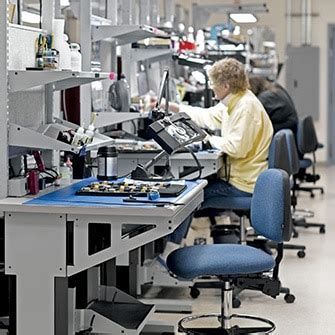
FAQs
Q: What is contract electronic assembly?
A: Contract electronic assembly (CEA) refers to the outsourcing of pcb assembly and pcba services to specialized companies. These firms manage the manufacturing process, including design, assembly, testing, and logistics, allowing clients to focus on their core business activities.
Q: How does contract electronic assembly enhance efficiency?
A: CEA enhances efficiency by leveraging advanced technologies and experienced workforce. This enables faster production times, reduced costs, and higher quality standards in pcb assembly, ultimately leading to better product turnaround.
Q: What are the main benefits of working with contract manufacturers?
A: The primary benefits include access to cutting-edge technologies, reduced capital expenditure on production equipment, flexibility in scaling operations, and improved innovation through collaborative partnerships. This is particularly evident in pcba, where quality assurance is paramount.
Q: What emerging trends are shaping the contract electronic assembly industry?
A: Key trends include increasing automation through robotics, the integration of artificial intelligence for predictive maintenance, and a growing emphasis on sustainability practices. These innovations are pushing the boundaries of what’s possible in pcb assembly, enhancing overall performance.
Q: How important is collaboration in contract electronic assembly?
A: Collaboration plays a crucial role in enhancing manufacturing outcomes. By partnering with experienced CEA providers, companies can benefit from shared knowledge and resources that foster innovation and efficiency within their production processes.

